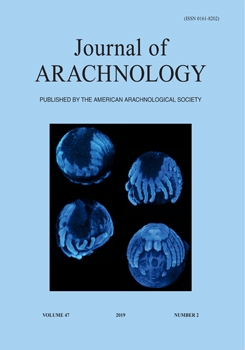High throughput sequencing (HTS) has emerged as a valuable tool for the rapid isolation of genetic markers for population genetics and pedigree analysis. HTS-based SNP (single nucleotide polymorphism) genotyping protocols like RAD (Restriction-site associated DNA) sequencing or hybrid capture allow for the isolation of thousands of markers from any non-model organism. However, these protocols are relatively laborious and expensive and the resulting high marker density is not always necessary. Since HTS technology has also greatly simplified the process of microsatellite marker isolation and genotyping, we develop microsatellite markers as a cost-efficient and simple alternative to SNP genotyping. We present low coverage genome sequencing data from seven distantly related spider species (Argiope bruennichi (Scopoli, 1772), Larinia jeskovi Marusik, 1987, Oedothorax retusus (Westring, 1851), Pisaura mirabilis (Clerck, 1757), Australomisidia ergandros (Evans, 1995), Cheiracanthium punctorium (Villers, 1789), Theridion grallator Simon,1900) and show the utility of HTS for microsatellite isolation. We also present a simple Illumina amplicon sequencing protocol to genotype microsatellites from multiplex PCR amplicons in the Hawaiian happy face spider T. grallator. We discuss advantages and drawbacks of the use of microsatellites for a range of research questions, and highlight an unexpectedly fast decay and gain of repeat loci for T. grallator.
How to translate text using browser tools
16 September 2019
Cost effective microsatellite isolation and genotyping by high throughput sequencing
Henrik Krehenwinkel,
Susanne Meese,
Christoph Mayer,
Jasmin Ruch,
Jutta Schneider,
Trine Bilde,
Sven Künzel,
James B. Henderson,
Joseph Russack,
Warren Brian Simison,
Rosemary Gillespie,
Gabriele Uhl
ACCESS THE FULL ARTICLE

The Journal of Arachnology
Vol. 47 • No. 2
August 2019
Vol. 47 • No. 2
August 2019
amplicon sequencing
genome
paternity assessment
population genetics




